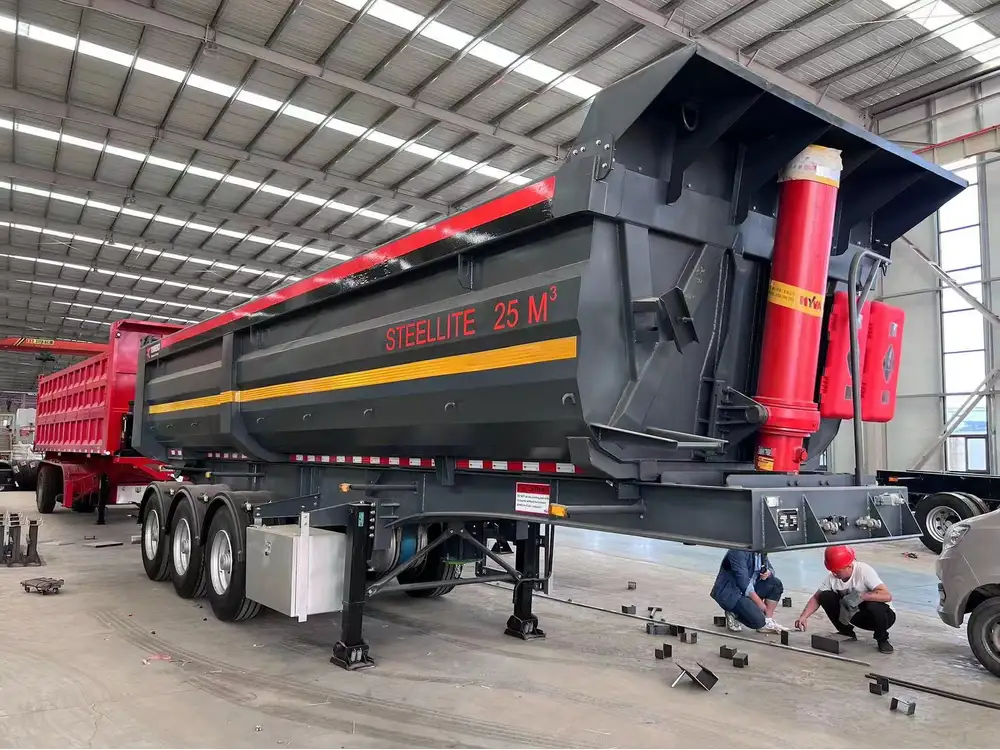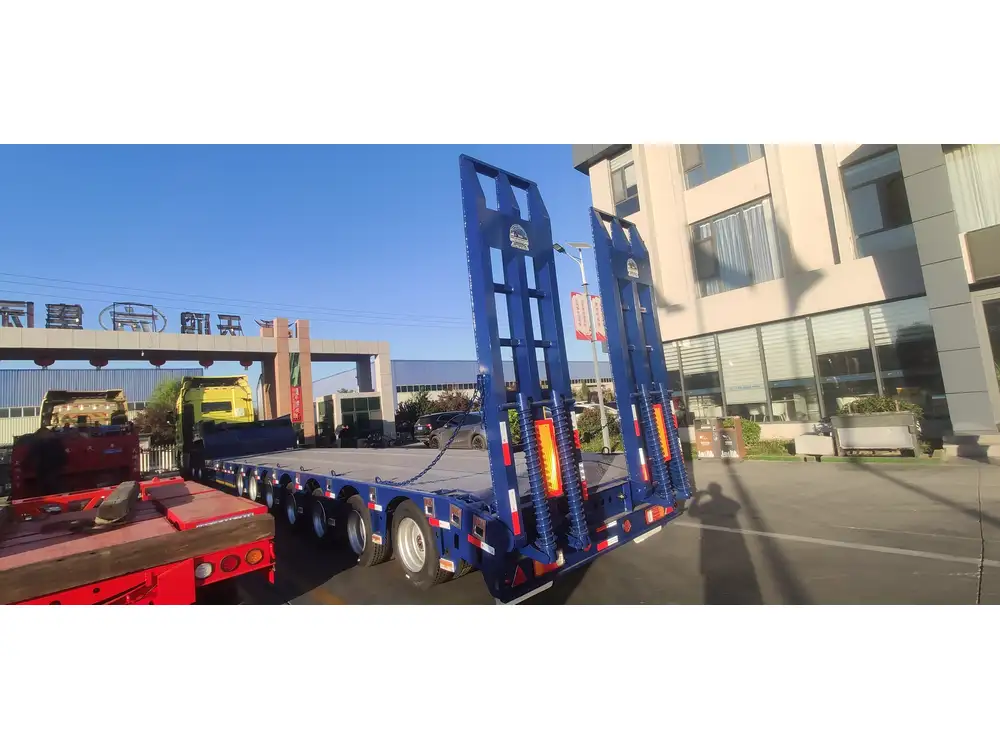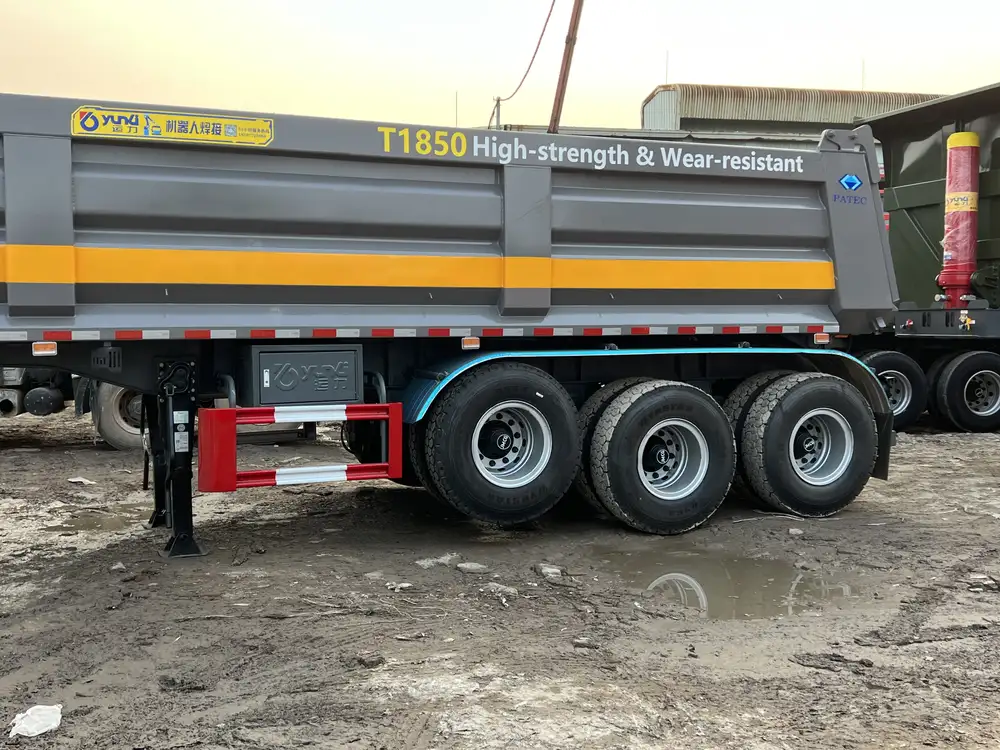Towing a semi-truck trailer is not merely a technical skill; it demands a combination of knowledge, precision, and safety awareness. Whether you are a seasoned truck driver or a newcomer to the trucking industry, understanding the nuances of this process can significantly enhance your efficiency and safety on the road. This guide covers everything you need to know about towing a semi-truck trailer, from preparation to the actual process and even post-towing maintenance.
Table of Contents
- Understanding Semi-Truck Trailers
- Necessary Equipment for Towing
- Preparation Before Towing
- Step-by-Step Guide on Towing
- Common Mistakes to Avoid
- Post-Towing Checks and Maintenance
- Frequently Asked Questions
Understanding Semi-Truck Trailers
Before exploring the towing process, it’s imperative to understand what constitutes a semi-truck trailer. Typically, a semi-truck trailer can be classified into various types, each designed for distinct purposes:

Types of Semi-Trailers
| Trailer Type | Description | Common Uses |
|---|---|---|
| Flatbed Trailer | Has no sides or roof, allowing for loading from all sides | Construction, heavy equipment |
| Refrigerated Trailer | Contains a refrigeration unit for temperature-sensitive goods | Food-grade transportation |
| Dry Van Trailer | Enclosed and secured, providing protection from elements | General freight and ecommerce |
| Tanker Trailer | Designed to carry liquids and gases | Fuel, chemicals, food products |
Understanding these variants will not only help you in selecting the right trailer for your load but also in troubleshooting issues when towing.
Necessary Equipment for Towing
Successfully towing a semi-truck trailer requires an array of essential tools and equipment:
Essential Towing Equipment
- Towing Vehicle: Must have adequate horsepower and towing capacity; usually a heavy-duty truck or larger-model semi-truck.
- Hitch: A high-quality, compatible hitch that matches your towing vehicle’s specifications.
- Safety Chains: Crucial for added security; they should be crossed under the hitch.
- Braking System: A trailer brake controller is either electronic or hydraulic, allowing synchronization with the towing vehicle.
- Mirrors: Extended side mirrors to improve visibility when towing large trailers.
- Reflective Signs: To enhance visibility and caution other road users; especially necessary in low-light conditions.
Having the right equipment prepares you for any conditions you may face during transport.

Preparation Before Towing
Preparation is key to a safe and successful towing operation. Here are steps that should be taken to get ready:
Pre-Towing Checklist
- Verify Weight Limits: Ensure the combined weight of the trailer and cargo does not exceed the towing vehicle’s limits.
- Inspect Equipment: Check for any wear or damage to the hitch, chains, and braking systems. Replace worn components immediately.
- Load Distribution: Ensure that the load is evenly distributed on the trailer axles to maintain balance and increase maneuverability.
- Tire Pressure: Inspect and inflate tires on both the towing vehicle and the trailer for optimal performance.
- Connection Check: Securely connect the trailer to the hitch. Test all connections, including safety chains and electrical connections for lights and brakes.
- Test Lights: Verify that all lights (brake, turn signals, and marker lights) are functional.
Safety Considerations
Adherence to local laws and regulations regarding trailer towing is critical to ensure compliance and safety during transport.

Step-by-Step Guide on Towing
Once prepared, the actual towing process can commence. Below is a structured approach to safely towing your semi-truck trailer:
Step-by-Step Towing Process
- Align the Tractor with the Trailer: Approach the trailer carefully, making sure it’s directly aligned with the hitch to avoid misalignment when backing up.
- Back Up Cautiously: With someone guiding you, slowly back up the towing vehicle to connect with the trailer hitch.
- Secure the Connection: Engage the hitch securely, verifying that it clicks into place. Attach safety chains in a crisscross manner to secure the connection.
- Connect the Electricals: Plug in the trailer’s electrical connector to the towing vehicle, ensuring brake and turn signal lights work.
- Perform a System Check: Conduct a final review of all connections and equipment to ensure everything is secure and functional.
- Start Driving: Once everything passes inspection, start driving slowly. Make gradual movements to test the trailer’s response.
Maneuvering with a Trailer
Towing a semi-truck trailer requires different driving techniques:
- Turning: Make wider turns, as trailers will track differently than the towing vehicle.
- Braking: Begin braking earlier than usual; downhill braking may require distributing weight effectively across axles.
- Reversing: Use mirrors extensively. Turn the steering wheel in the direction you want the trailer’s rear to go.

Common Mistakes to Avoid
Awareness of common errors can prevent serious mishaps. Here are some mistakes to avoid during towing:
Towing Mistakes
- Ignoring Load Limits: Failing to adhere to weight restrictions can lead to vehicle damage and dangerous driving conditions.
- Neglecting Pre-Tow Checks: Skipping the inspection process can result in equipment failure.
- Improper Trailer Loading: Unbalanced loads can cause trailer sway, making driving hazardous.
- Overlooking Visibility: Not using extended mirrors can lead to blind spots and accidents.
- Underestimating Stopping Distance: Loaded trailers require longer stopping distances, which drivers frequently overlook.
Being cognizant of these mistakes enhances your safety and the longevity of your towing equipment.
Post-Towing Checks and Maintenance
Once you have completed your journey, a thorough post-towing inspection is indispensable:

Post-Towing Maintenance Checklist
- Disconnect Safely: Carefully detach the trailer from the towing vehicle, ensuring no components are stuck.
- Inspect Tire Conditions: Look for any signs of wear or damage that may have occurred during the drive.
- Brake System Check: Confirm that the brake systems function properly before the next use.
- Hitch Inspection: Look over the hitch and safety chains to ensure they are in good repair for future use.
- Clean Equipment: Wash down the trailer and vehicle, especially after hauling corrosive materials or driving in foul weather.
Regular maintenance can save costs and ensure safety in future towing endeavors.
Frequently Asked Questions
1. What is the maximum load I can tow with my truck?
The maximum load varies based on your truck’s manufacturer specifications. Always consult the manual or manufacturer’s guidelines.

2. Do I need a special license to tow a semi-trailer?
Depending on your location and the weight of the trailer, you may need a commercial driver’s license (CDL). Check local regulations.
3. What should I do if my trailer begins to sway while driving?
Reduce speed and avoid sudden movements. If the problem persists, safely pull over to assess the load distribution.
4. Can I tow a trailer without electric brakes?
Towing without electric brakes is not advisable for heavier trailers. Safe operation greatly depends on having a reliable braking system.

5. Is it legal to tow with a standard pickup truck?
Many pickup trucks are capable of towing semi-trailers, but check for compatibility with your specific vehicle’s specifications and local laws.
In navigating the intricacies of how to tow a semi-truck trailer effectively, we must prioritize preparation, adept driving, and diligent maintenance. By adhering to the outlined guidelines and remaining aware of common pitfalls, you’ll not only enhance your own safety but also contribute to a safer trucking industry overall. With knowledge, practice, and precision, we can tow with confidence and clarity, ensuring that our cargo reaches its destination efficiently and securely.



